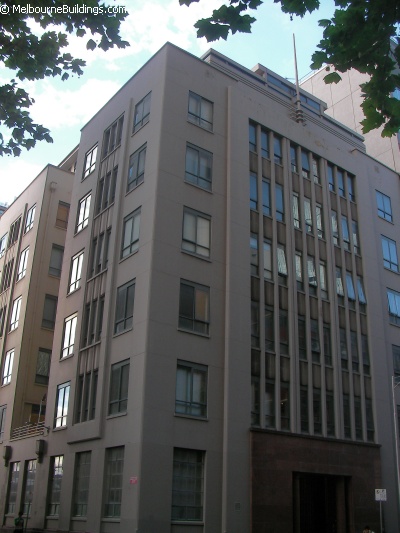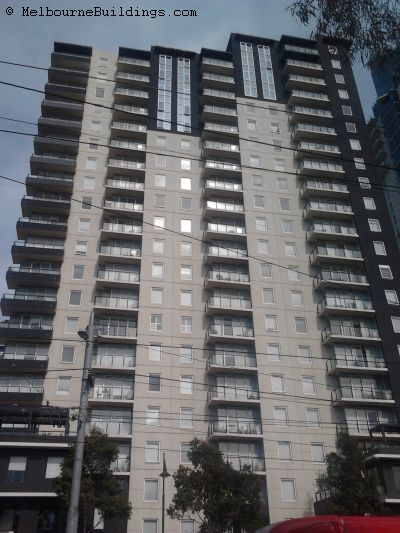
 Former Melbourne Metropolitan Tramways Board Building: 616-618 Little Collins Street, Melbourne
Former Melbourne Metropolitan Tramways Board Building: 616-618 Little Collins Street, Melbourne
Originally built for the former Melbourne Metropolitan Tramways Board this is a striking six storey building is a combination of styles with a main facade facing Little Collins Street and arranged in three palazzo along Godfrey Street. It has elements of moderne, stripped classical and art deco architecture.
The site went for sale in 1924 and was previously occupied by two double storey brick buildings, a merchant, L. Donnellan and a motor garage and yard along Godfrey Street1. The MMTB, who owned adjacent buildings at 669-677 Bourke Street acquired the block and set about maximising the potential of the site to extend its headquarters, with the building completed in stages between 1938 and early 1939.
The facades are each divided into three bays with the entrance in the centre bay framed by brown marble faux doric columns on either side of a recessed lobby doorway with rectangle surround in marble veneer with subtle cornice emblazoned with the words “Melbourne Metropolitan Tramways Board” in a gilded font. Each central bay extends vertically with piers and spandrels and the Little Collins facade culminates in a flagpole spire and setbacks roof profile.
Following the Central Activities District Conservation Study by Graeme Butler in 1984 it was heritage graded C by the Melbourne City Council although it was curiously also tagged with the status “not worthy of retention”.
Despite the dubious heritage status in 2010 it was adaptively reused with few exterior modifications and converted for residential use, strata titled and promoted under the name of “Grand City Apartments” as New York style loft living .
The building forms a well preserved interwar and Victorian streetscape with neighbouring buildings including the Savoy Hotel on Spencer Street, the Tram and Omnibus Building and Former Mail Exchange which terminates the vista along Godfrey laneway. Striking similarity in style can be seen with the old SEC headquarters on Flinders Street which has also been converted to residential strata title.
References
- City of Melbourne i-Heritage
- Central Activities District Conservation Study – Graeme Butler, 1984
- The Argus. Saturday 19 January 1924 pg 3 ↩

 Rivergarden Condos: 79 Whiteman Street, Southbank
Rivergarden Condos: 79 Whiteman Street, Southbank